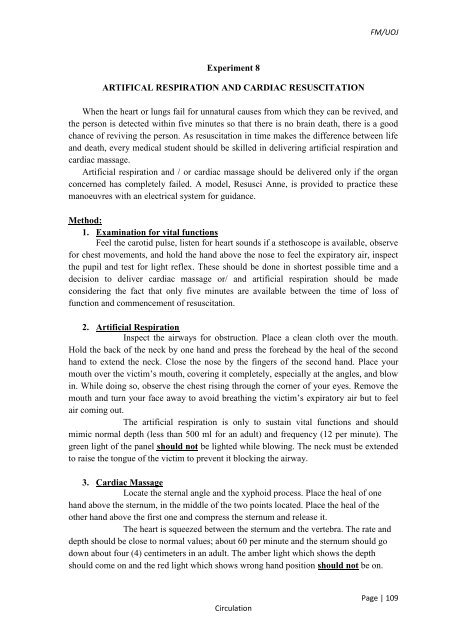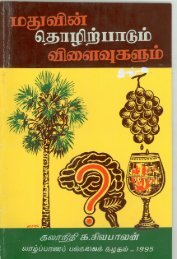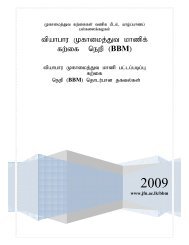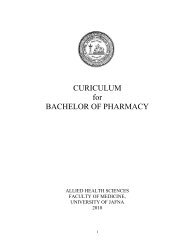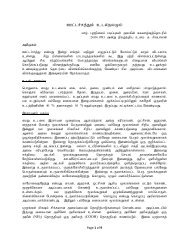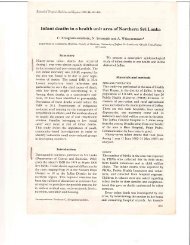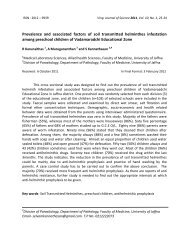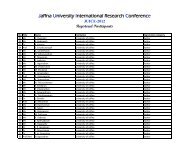MANUAL PHYSIOLOGY PRACTICAL - Repository:The Medical ...
MANUAL PHYSIOLOGY PRACTICAL - Repository:The Medical ...
MANUAL PHYSIOLOGY PRACTICAL - Repository:The Medical ...
You also want an ePaper? Increase the reach of your titles
YUMPU automatically turns print PDFs into web optimized ePapers that Google loves.
FM/UOJ<br />
Experiment 8<br />
ARTIFICAL RESPIRATION AND CARDIAC RESUSCITATION<br />
When the heart or lungs fail for unnatural causes from which they can be revived, and<br />
the person is detected within five minutes so that there is no brain death, there is a good<br />
chance of reviving the person. As resuscitation in time makes the difference between life<br />
and death, every medical student should be skilled in delivering artificial respiration and<br />
cardiac massage.<br />
Artificial respiration and / or cardiac massage should be delivered only if the organ<br />
concerned has completely failed. A model, Resusci Anne, is provided to practice these<br />
manoeuvres with an electrical system for guidance.<br />
Method:<br />
1. Examination for vital functions<br />
Feel the carotid pulse, listen for heart sounds if a stethoscope is available, observe<br />
for chest movements, and hold the hand above the nose to feel the expiratory air, inspect<br />
the pupil and test for light reflex. <strong>The</strong>se should be done in shortest possible time and a<br />
decision to deliver cardiac massage or/ and artificial respiration should be made<br />
considering the fact that only five minutes are available between the time of loss of<br />
function and commencement of resuscitation.<br />
2. Artificial Respiration<br />
Inspect the airways for obstruction. Place a clean cloth over the mouth.<br />
Hold the back of the neck by one hand and press the forehead by the heal of the second<br />
hand to extend the neck. Close the nose by the fingers of the second hand. Place your<br />
mouth over the victim’s mouth, covering it completely, especially at the angles, and blow<br />
in. While doing so, observe the chest rising through the corner of your eyes. Remove the<br />
mouth and turn your face away to avoid breathing the victim’s expiratory air but to feel<br />
air coming out.<br />
<strong>The</strong> artificial respiration is only to sustain vital functions and should<br />
mimic normal depth (less than 500 ml for an adult) and frequency (12 per minute). <strong>The</strong><br />
green light of the panel should not be lighted while blowing. <strong>The</strong> neck must be extended<br />
to raise the tongue of the victim to prevent it blocking the airway.<br />
3. Cardiac Massage<br />
Locate the sternal angle and the xyphoid process. Place the heal of one<br />
hand above the sternum, in the middle of the two points located. Place the heal of the<br />
other hand above the first one and compress the sternum and release it.<br />
<strong>The</strong> heart is squeezed between the sternum and the vertebra. <strong>The</strong> rate and<br />
depth should be close to normal values; about 60 per minute and the sternum should go<br />
down about four (4) centimeters in an adult. <strong>The</strong> amber light which shows the depth<br />
should come on and the red light which shows wrong hand position should not be on.<br />
Circulation<br />
Page | 109


